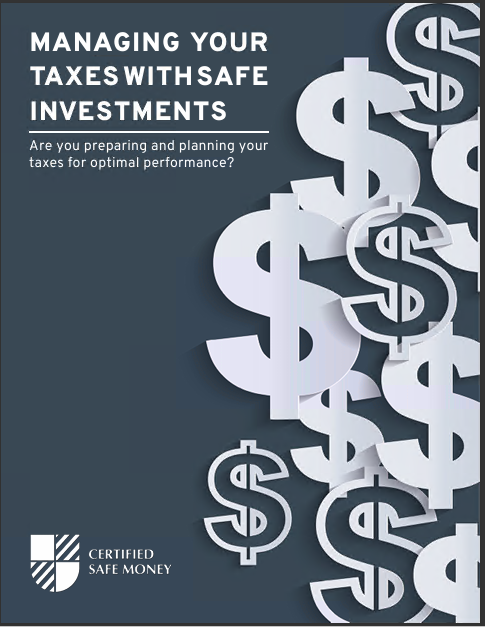Key Takeaways
-
Whole Life policies guarantee fixed premiums and cash value growth, while Indexed Universal Life (IUL) offers flexibility with investment-linked returns.
-
Choosing between Whole Life and IUL depends on your financial goals, risk tolerance, and the level of predictability you prefer.
Introduction to Safe Money Strategies
When you think about protecting your financial future, life insurance might be the first option that comes to mind. Among the many types of life insurance, Whole Life and Indexed Universal Life (IUL) policies stand out for their ability to build cash value and provide lifelong coverage. However, these two insurance types differ significantly in their approach to safety, growth potential, and financial flexibility. Understanding their differences is essential to making an informed choice.
Here are four critical differences to help you navigate the decision between Whole Life and Indexed Universal Life.
1. Premium Flexibility: Fixed or Adjustable?
Whole Life Insurance: Predictable and Fixed
With Whole Life insurance, you know exactly what you’re getting into. Your premiums remain the same throughout the duration of the policy—typically until age 100 or beyond. This predictability offers peace of mind, especially if you value stability and budget consistency. You won’t face surprises when your premium is due, making it easier to manage your finances over decades.
Indexed Universal Life: Flexible but Complex
In contrast, Indexed Universal Life policies offer significant flexibility. You can adjust premiums within certain limits, paying more when times are good or less when budgets get tight. This flexibility makes IUL attractive if you anticipate variable income or expect your financial needs to shift over time.
However, flexibility also comes with complexity. If premiums aren’t managed carefully, your policy could lapse or not grow enough cash value to meet your long-term objectives. Thus, IUL demands more active management and financial discipline.
2. Cash Value Growth: Guaranteed vs. Market-Linked
Whole Life Insurance: Slow and Steady Wins the Race
Whole Life insurance policies build cash value at a steady, guaranteed rate set by the insurance company. This rate generally remains unaffected by market fluctuations. While the growth might feel modest, the consistent accumulation is appealing if your priority is security rather than rapid growth.
Think of Whole Life as a reliable, slow-growing savings account coupled with lifelong coverage. You won’t see dramatic spikes in your cash value, but you also won’t see sudden drops. This makes Whole Life an excellent safe-money option.
Indexed Universal Life: Potentially Higher Returns with Some Risk
IUL policies tie cash value growth to a market index, such as the S&P 500. This means your cash value has the potential for higher returns based on positive market performance, but it won’t directly invest in the market. Usually, there are caps and floors—limits on the upside and downside—that provide some protection.
The trade-off here is clear: with IUL, you’re accepting more uncertainty in exchange for potentially greater rewards. If you feel comfortable with some level of risk for the possibility of higher gains, IUL could be the better match.
3. Risk Exposure: Safety Net or Roller Coaster?
Whole Life Insurance: A Secure Safety Net
Whole Life policies eliminate nearly all risk related to market volatility. Your cash value and death benefit remain consistent, unaffected by economic downturns. If stability is your highest priority, Whole Life acts as a robust safety net, allowing you to sleep easier at night without worrying about market crashes or economic downturns.
This unwavering stability makes Whole Life particularly appealing if you’re nearing retirement or prefer predictability in your financial planning.
Indexed Universal Life: Riding Market Waves Safely
Indexed Universal Life policies, while tied to market indexes, still protect against direct market losses. Unlike investing directly in the stock market, you won’t lose cash value due to negative index performance—thanks to established floor rates (often 0%). However, during poor market periods, your policy might not earn any growth.
With IUL, your cash value might experience flat periods, but it won’t decline due to market downturns. If you’re comfortable enduring periods without growth in exchange for long-term potential, IUL strikes a balance between safety and risk exposure.
4. Policy Loans and Withdrawals: Comparing Your Options
Whole Life Insurance: Straightforward Borrowing
Whole Life policies let you borrow against your cash value relatively easily. Typically, these policy loans feature fixed interest rates, and there’s no obligation to repay on a strict schedule. However, keep in mind any outstanding loans will reduce your death benefit.
This option is appealing if you foresee needing a hassle-free way to access cash periodically, perhaps during retirement or unexpected financial circumstances. Whole Life loans are straightforward, predictable, and easy to manage.
Indexed Universal Life: Borrowing with Flexibility and Complexity
With IUL policies, borrowing from your cash value can be more complex but also more flexible. IUL loans often come with variable interest rates linked to current market conditions. If market performance is favorable, you might benefit from more advantageous loan terms or even a positive arbitrage—meaning your cash value earns more than the cost of the loan.
However, if market performance falters, managing these loans could become complicated. IUL loans require careful oversight and active engagement, making them better suited if you’re financially savvy or have trusted guidance from a financial professional.
How to Decide Which Policy Is Right for You
When choosing between Whole Life and Indexed Universal Life insurance, consider these important factors:
-
Your Risk Tolerance: Whole Life suits those seeking guaranteed stability, whereas IUL appeals if you’re open to moderate risk for potential gains.
-
Your Financial Goals: Consider if you value slow, guaranteed accumulation versus the opportunity for higher, variable growth.
-
Your Premium Flexibility Needs: Assess if you prefer fixed premiums or the ability to adjust your payments over time.
-
Your Level of Financial Engagement: Decide whether you prefer a “set-it-and-forget-it” approach or you’re comfortable actively managing and adjusting your policy.
Understanding your preferences in these areas will make your choice clearer.
Making the Safe Money Choice
Both Whole Life and Indexed Universal Life policies offer robust tools for building wealth, protection, and financial peace of mind. The right choice depends on aligning your comfort with risk, your long-term goals, and your willingness to engage actively in financial management.
Whether it’s the consistent security of Whole Life or the strategic flexibility of Indexed Universal Life, both paths provide valuable options for your financial future. Always ensure your choice reflects not only your current situation but also your envisioned path forward.
Before committing, consider speaking with a licensed financial professional to explore specific scenarios tailored to your individual needs.
Safeguard Your Financial Future
Choosing between Whole Life and Indexed Universal Life insurance is a significant decision with lasting impact. Think carefully about your personal financial habits, risk preferences, and future goals. Remember, the best policy is one that aligns closely with your financial comfort zone and long-term objectives. Start taking the right steps today to safeguard your financial future effectively.












